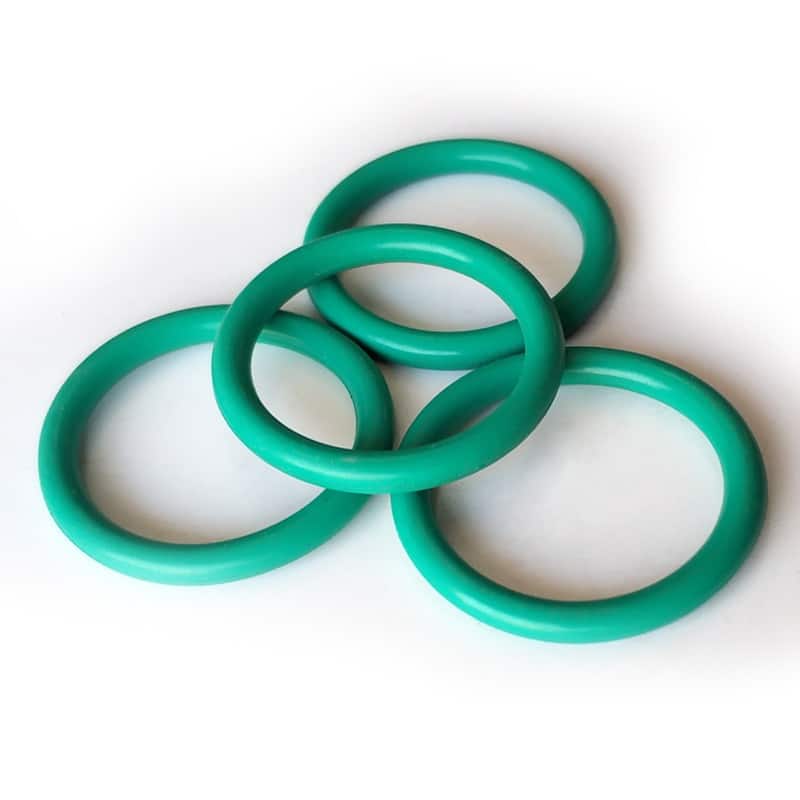O-ring leaks under pressure are more than an inconvenience — they can shut down entire systems. Are you struggling with extrusion, blowouts, or pressure failures?
Preventing O-ring leakage in high-pressure environments requires the right materials, designs, and installation practices. Here's your expert guide to avoiding common pressure sealing issues.
Standard O-rings often fail under high pressure. In this guide, I’ll show you how to choose the right O-ring and sealing method to withstand pressure, reduce downtime, and extend service life.
What Causes O-Ring Leakage Under Pressure?
O-ring blowout, extrusion, or weeping usually result from incorrect material, poor groove design, or overpressure beyond the seal’s tolerance.
In high-pressure environments, common causes include:
- Undersized or soft O-ring material
- Inadequate gland fill or squeeze
- Lack of backup rings for extrusion control
- Thermal expansion or movement misalignment

How to Prevent High-Pressure O-Ring Failures
I’ve worked with hydraulic system designers and OEM engineers who all faced the same problem — standard O-rings just couldn’t hold up. Here’s how we solve it step-by-step:
1. Choose the Right Material
| Materiale | Resistenza alla pressione | Intervallo di temperatura | Ideal Application |
|---|---|---|---|
| NBR | Up to 10 MPa | -40 to 120°C | Basic hydraulics |
| FKM | Up to 20 MPa | -20 to 250°C | High-temp fluid seals |
| PTFE + Backup | 30 MPa+ | -50 to 300°C | Chemical, extreme pressure |
For most hydraulic or pump systems, I recommend FKM over NBR for better compression set resistance.
2. Use Anti-Extrusion Support
- Aggiungere backup rings made of PTFE, nylon, or PEEK
- Install backup on the low-pressure side to block extrusion gap
- Use X-rings or quad-rings for stability under dynamic movement
➡️ Check this guide: High-Pressure Hydraulic O-Rings
3. Optimize Groove Design
Poor gland design is the hidden killer of O-rings.
- Maintain correct squeeze (typically 10–30%)
- Allow room for thermal expansion
- Avoid sharp corners (use radius at base of groove)
- Use compression calculator if needed
4. Control Installation Conditions
- Clean and dry sealing surface
- Use compatible grease or silicone lubricant
- Avoid twisting the O-ring during insertion
Where Do O-Rings Leak Most Often?
| Applicazione | Common Pressure (MPa) | Problem Area | Recommended Solution |
|---|---|---|---|
| Cilindri idraulici | 10–25 | Rod & piston seals | FKM + PTFE backup |
| Pumps & valves | 15–35 | Housing & shaft seals | PTFE encapsulated O-rings |
| High-pressure testing systems | 20–60 | Static compression seals | Metal-cored seals or PTFE rings |
Need custom design help? Our team provides tailored O-ring sealing solutions.
How to Test Your O-Ring for Pressure Readiness?
- Perform pressure cycling tests (min 1000 cycles)
- Use compressed air leak test (bubble method)
- Inspect for flattening, radial cracks, or extrusion trails
📌 Tip: Always cross-check with O-ring specs from our O-Ring Selection Guide
Conclusione
Preventing O-ring leaks under high pressure isn’t guesswork. It’s engineering — and it starts with the right material, design, and support elements.
Need expert advice on sealing under pressure?
Send us your working pressure, temperature, and size — we’ll engineer the right solution with no MOQ.
- E-mail: [email protected]
- Messaggio di WhatsApp: +86 17622979498
Get high-pressure O-rings that won’t blow out when it matters most.


